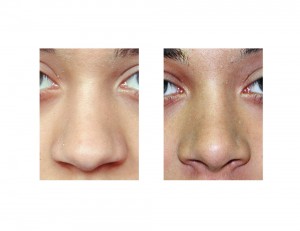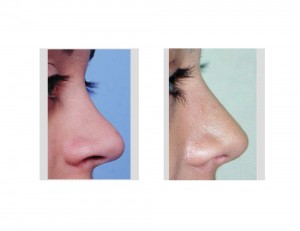Background: Rhinoplasty is one of the most popular cosmetic surgery operations in teenagers. While the basics techniques of nasal reshaping in teen rhinoplasty are no different than that in adults, there are numerous unique aspects to it that influence its timing and potential interpretation of the results.
Teen rhinoplasty is usually very seasonal, with teenagers presenting for surgery during school breaks and particularly during the summer. They often present in a transitional time, like between high school and college, as they go into a new social environment that will not interpret that they have had surgery. While a teen may want a noticeable change in their face, they often are particularly private about it being done.
A common question is when can a teen have a rhinoplasty? While there are no absolute anatomic or growth guidelines, the more important question is the psychological stability and expectations of the teen requesting it. This is where the role of the parents has a great insight and influence. But as a general guideline, girls can have it done as early as 13 or 14 while boys should wait just a little longer and have the surgery closer to age 15 or 16 years olds. There are exceptions of course and this depends on the magnitude of the nasal deformity.
In today’s internet and Facebook world, the expectations of a teen rhinoplasty are of critical importance. Teenagers often email or come in with pictures of models and celebrities for what they want their nose to look like. They not infrequently ask if they can have their nose just like a certain famous person. It is important to point out to them that such a change is not only not possible and they should strive to have nose changes that fit their face and can be surgically achieved. This is where the role of computer imaging plays an invaluable role, even if it is not always what the teens wants to hear or see.
Besides cosmetic changes, a teen may seek rhinoplasty for functional reasons as well. Breathing difficulties from trauma or a sports injury or congenital or developmental abnormalities such as cleft lip and palate all commonly cause breathing difficulties or an obviously crooked nose. These situations are where a combined functional and aesthetic procedure is done known as a septorhinoplasty.
Case Study: This 16 year-old female had wanted a rhinoplasty ever since she went through puberty. She wanted it done in the summer between her junior and senior high school years. She felt her upper nose was too flat and broad and the tip of her nose was too long and downturned. She wanted a more refined ‘cuter’ nose that had a more narrow bridge and shorter and less wide tip. She had no breathing problems.


One of the biggest challenges after a teen rhinoplasty is the realization that complete rhinoplasty healing is a process and could take up to a year to see the final result. Expectations from many teens is that rhinoplasty is like ‘instant oatmeal’ or as simple to get the result as what they saw on Photoshop. This is where having the parents on board initially to provide a support system after surgery can be very important. Teens do have a recovery advantage in that they tend to heal quickly and their nasal skin often has good elasticity so it may shrink down faster.
Case Highlights:
1) Teen rhinoplasty is unique from adults in its timing and expectations from the surgery.
2) Computer imaging before any rhinoplasty, particularly in teens, should be done to prevent any unrealistic expectations.
3) Parental support is crucial in teen rhinoplasty to support the patient through the recovery period.
Dr. Barry Eppley


